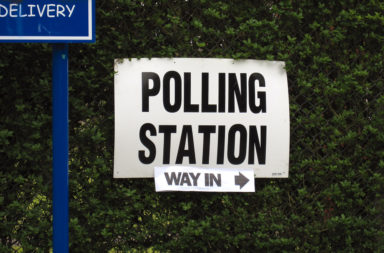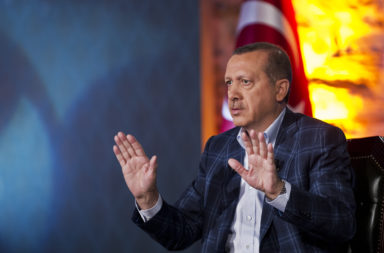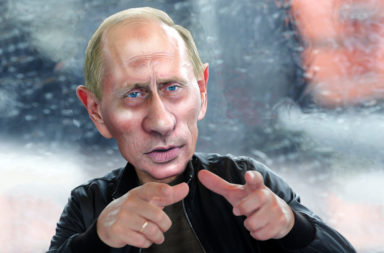On May 7, France will choose its next president.
In the first round of voting on April 23, voters rejected candidates from the country’s established parties, lifting former investment banker Emmanuel Macron and nationalist Marine Le Pen to the runoff. The vote capped a swift rise for Le Pen’s National Front party, whose anti-immigrant views had long interfered with its general success. The fringe seems to have become the mainstream. A political radical has become a possible president.
Yet Le Pen’s popularity is hardly an outlier. Events like Brexit, Trump’s election, Turkish president Recep Tayyip Erdogan’s consolidation of power and the rise of far right candidates across Europe make Le Pen’s ascension the rule, not the exception.
With each new shock, pundits scramble to explain the clashing forces producing these political surprises. Their analysis often features traditional distinctions: Red versus blue. Urban versus rural. Religious versus secular. Populist versus elite.
All those divisions are real, but none captures the depth and breadth of what’s happening. Instead, we are witnessing the reemergence of an ancient fault line that has separated human groups for centuries, and is now thrusting itself into global politics.
This fault line is what we call tightness versus looseness. Tight groups are defined by strict rules and social order, tradition and predictability. Loose groups eschew rules, welcome new ideas and embrace tolerance.
Until we recognize this dichotomy and understand where it comes from, explanations for political trends around the world will continue to elude us.
Shifting tightness
Our research, using computational models, international surveys and archival and historical data, shows that threat lies at the heart of tightness-looseness differences.
Threats include warfare, famine and natural disasters. Under threat, societies are likely to tighten up in order to survive, establishing strict rules and embracing strong leaders to maintain order. Japan, which is a tight society, faces the threat of 1,000 earthquakes every year. Germany – also relatively tight – has been the center of two world wars in the last century. Looser nations, like New Zealand and Brazil, on the other hand, face fewer threats and can afford to be more permissive.
But tightness-looseness is far more than just a way of understanding cultural differences. It is also the key to unlocking many ongoing political clashes that have the potential to rewire political maps around the world.
We have identified two notable emerging trends.
First, while the tight-loose axis reliably differentiates between countries, it is now playing out dramatically within nations, pitting rural, working-class and mostly low-mobility communities against urban, middle-class and highly mobile multicultural communities.
Second, and more important, leaders worldwide are intentionally manufacturing threats to tighten society and get themselves elected. Trump’s recent election is an example of this dynamic. In a study of more than 500 Americans, a higher concern with threat predicted a Trump vote. Anxiety about external threats from North Korea and the Islamic State, and fear that the U.S. was becoming too lax, were the best predictors of support for Donald Trump relative to other measures, including authoritarian beliefs. Trump supporters desired a tighter society and voted for the leader they believed could bring about these stronger norms.
The tight-loose fault line is also causing sharp divides across Europe. The strongest supporters of the U.K.’s desire to leave the European Union were working-class and rural voters – the demographic groups that our past studies have shown are most concerned about threat. Fearful working-class voters also drove the candidacies of far right politicians in Poland, the Netherlands and Austria. The desire for a safer and more secure Turkey was among the primary drivers of Erdogan’s successful referendum that has granted him unprecedented power.
Fearing foreign threats
The elections in France, where foreign threat has been an intentional centerpiece, is the most recent case of this tight-loose divide. When launching her campaign last February, Marine Le Pen stated that globalization and radical Islam are “working to make our nation disappear.” As data from Bloomberg demonstrate, she also won nine out of the 10 French departments – a political division somewhat similar to American counties – with the highest unemployment rate. These are located in France’s northern “Rust Belt” and near the Mediterranean coast.
Through greater support for Le Pen, France is witnessing a cultural shift towards tightness. In Le Pen’s own words: “the divide is not between the left and right anymore, but between patriots and globalists.”
In order to test these claims, we recently surveyed 300 French citizens. In our sample, a desire for greater tightness was again strongly associated with votes for Marine Le Pen. Le Pen voters felt highly threatened and were especially concerned about immigration, loss of French identity, terrorism and crime. They also showed a strong desire for cultural tightness, including less lenience toward French outsiders, harsher punishments for those who violated French norms and stricter national law.
These findings are consistent with Le Pen’s own rhetoric. Throughout her campaign, she has warned of immigration negatively impacting voters’ neighborhoods, villages, schools and wages, and has threatened that globalization and Islam will “bring France to its knees.” Her stance contrasts drastically from Macron, who has positioned himself as a globalist with more tolerant attitudes toward immigrants and foreigners.
Regardless of whether Le Pen wins the election, her rise reveals the increasing tension between tight and loose groups at the very time globalization was supposed to start erasing boundaries. Le Pen’s support shows that fear can transform even an open society like France into a nation with closed borders and minds.
Tightness-looseness provides a much-needed perspective to understand political clashes taking place worldwide. Our research shows that the most successful societies balance tightness and looseness, avoiding extremes in either direction. As societies become too tight, they become more ethnocentric, show lower creativity and are less able to adapt to change. As societies become too loose, they lack coordination and order and become chaotic. Either extreme is the road to instability. Now more than ever, leaders and voters need to seek this moderation and bridge this cultural divide.




